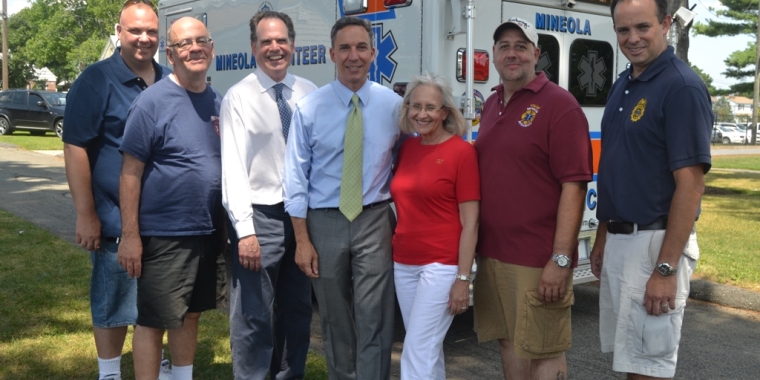From the Desk of Senator Jack M. Martins
Jack M. Martins
February 21, 2012
-
ISSUE:
- Local Government
- Transportation
-
COMMITTEE:
- Local Government
You might call it a pedestrian “no-man’s land,” a 16-mile stretch of roadway where an average of five people die each year. It’s not Manhattan’s Broadway or the Bronx’s Grand Concourse, nor is it notorious Queens Boulevard. It’s actually here in our backyard, Route 24, better known as Hempstead Turnpike.
The Tri-State Transportation Campaign has indentified the turnpike as the most dangerous road for pedestrians in the region for the last three years. This is an unfortunate distinction, but one that is finally drawing attention to a problem many of us have at least intuitively recognized for a long time. If you live, work, or even regularly drive there, you know it can be dangerous.
This week, we heard some potential solutions. For starters, our police department will study crash statistics and determine the most dangerous knockdown zones where collisions between people and cars are frequent. Enforcement efforts will be increased there, particularly red light violations and unsafe left turns. We can also expect a Nassau County public-education campaign, encouraging pedestrians to avoid crossing at mid-block and drivers to yield to pedestrians. Some are skeptical but I believe this is important. A great many dangerous behaviors, everything from seat belt usage to smoking, have been improved by public awareness campaigns. I would argue that a smaller, local problem can be equally impacted with a similar effort. If it saves even one life, it would be well worth it.
These undertakings aside, we must recognize the obvious problem: the turnpike is not pedestrian-friendly nor will it be until we make it so. That’s why the most promising development was the response from New York State Secretary of Transportation, Joan McDonald. She’s asking state engineers to not only come up with short-term fixes but to also concentrate on long-term solutions.
To that end, Long Island Senators Hannon, Fuschillo, Marcellino and myself, have asked her to implement New York State’s Complete Streets Law which was put into effect on February 11 It requires state and local transportation agencies to use “complete street” principles on projects receiving federal and state funding. The creative design features, which include sidewalks, crosswalks, pedestrian control signalization, bus pull outs, curb cuts, and traffic calming measures, are intended to facilitate safe travel by pedestrians, bicyclists, and drivers of all ages and abilities. “Incomplete streets” would be those designed with only cars in mind, which, unfortunately, is the case throughout Long Island. They make walking, biking, and public transportation inconvenient, unattractive, and, too often, dangerous.
How do we pay for these changes? U.S. Senator Charles Schumer is hoping to pass a federal amendment that will require state transportation agencies to direct a portion of their federal money to dangerous pedestrian streets like this. In light of $65 million in funding increases to New York in the proposed federal Surface Transportation Bill, it could mean a good amount for revamping dangerous streets like Hempstead Turnpike.
Long Island was America’s first suburb and was shaped mostly by the advent of the automobile but population and housing trends call for a new way of looking at things. Hempstead Turnpike is a case in point. We must commit ourselves to smart-growth design that will accommodate a changing Long Island. In this case, it could save lives.
To learn more about Complete Streets visit www.completestreets.org on the web.
Share this Article or Press Release
Newsroom
Go to Newsroom
Statement From Senator Jack M. Martins
August 5, 2015
